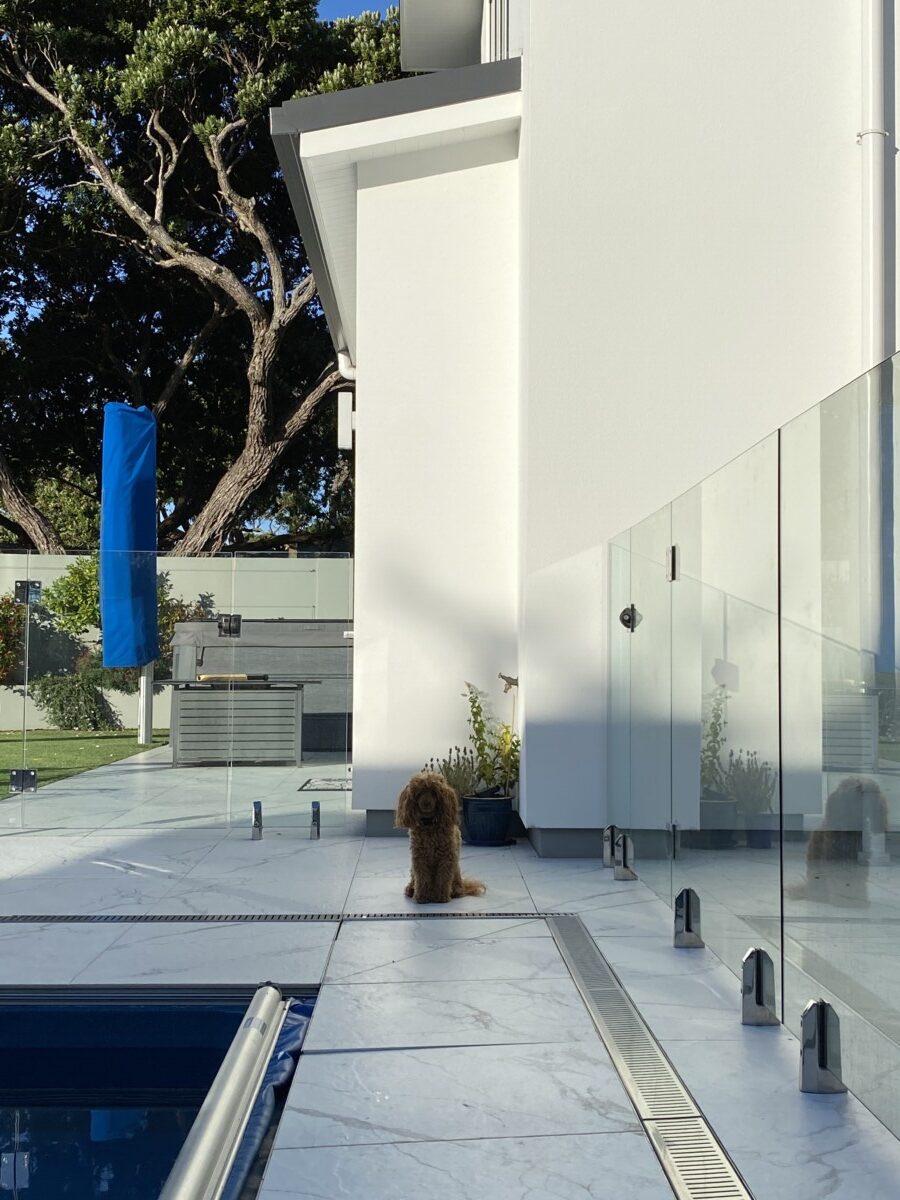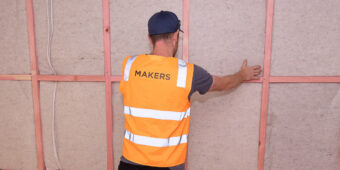Barriers for swimming pools
21 Sep 2023, Learn, Prove Your Know How, Technical

Strict regulations ensure the safety of children around swimming pools by requiring the installation of suitable barriers to restrict access. BRANZ outlines the requirements and where to find them
We enjoy an enviable outdoor lifestyle in New Zealand and, as our climate continues to warm, the number of residential swimming pools will probably continue to increase accordingly.
Keeping children safe around pools
Along with the enjoyment of these pools comes the legal obligation and responsibility for safeguarding children from the risks of these fun-filled features. This responsibility includes restricting unsupervised access by children – especially those under five years of age – to residential swimming pools.
The guideline for pool barriers was traditionally the Fencing of Swimming Pools Act 1987, but this was repealed by the Building (Pools) Amendment Act 2016, which inserted new provisions into the Building Act 2004.
Building Code clause F9
The Building (Pools) Amendment Act created a new Building Code clause F9 Means of restricting access to residential pools. This includes F9/AS1, which provides the Acceptable Solution for swimming pool barriers in general, and F9/AS2, which provides the Acceptable Solution for pool covers.
Clause F9 of the Building Code relates directly to section 162C (1) of the Building Act, which requires all residential pools to have barriers to restrict access by unsupervised children under five years of age. This section applies to pools constructed before the amendment to the Building Act and those built after in compliance with clause F9. Barriers also need to be maintained so they continue to be effective.
Barriers needed for all pools over 400mm deep
Pool barriers are required for all swimming pools that have a capacity to hold more than 400mm depth of water.
A pool fence must enclose the ‘immediate pool area’ (that is, the pool itself along with a confined area around the pool where activities related to or involving the pool take place).
Activities not related to or involving the pool must be kept outside the pool area. These include vegetable gardens, clotheslines and children’s play areas.
Using the immediate pool area to access the house from the property boundary or to gain access to other parts of the property from the house would, in most cases, conflict with the definition of immediate pool area.
A compliant pool barrier can be a fence or other forms of construction, such as a concrete block wall. Specifically designed frameless toughened glass barriers are growing in popularity.
The wall of a house or other building can also form part of the barrier to the immediate pool area or may enclose the total immediate pool area – for example, an indoor pool.
Pool barrier requirements
Dedicated pool barriers not on a property boundary must be no less than 1200mm high, measured from the finished floor or ground level outside the pool barrier.
Pool barriers may be angled no more than 15° from vertical and must only slope away from the pool. Any rods, rails or wires forming part of a pool barrier that are not vertical must be a minimum of 900mm apart vertically to restrict climbing by toddlers or children.
There must be no openings in the pool barrier that a 100mm diameter sphere can pass through.
Acceptable pool barriers
Acceptable ways of constructing pool barriers that are not on a property boundary are shown in Figure 1 of F9/AS1 and include solid panel type barriers, fencing with vertical members that include horizontal structural members, horizontal fencing and metal rail fencing.
F9/AS1 Figure 1 illustrates specific ground clearances, overall barrier heights and horizontal and vertical spacing requirements.
Consider THE space immediately outside
Determining the required barrier height is dependent on the characteristics of the space immediately outside the pool barrier. Changes in level adjacent to the barrier or the presence of climbable objects, buildings or other structures may enable a child to scale the barrier.
F9/AS1 Figure 2 shows acceptable methods for evaluating the impact of these ground features or objects outside the pool barrier but within 1200mm of the top of the barrier.
Any projections or indentations on the outside face of a pool barrier must not have a horizontal projection from the face of the pool barrier greater than 10mm, unless they are at least 900mm apart vertically.
Property boundaries
If a pool barrier is located on a property boundary, it must be at least 1800mm high measured from the ground level on the pool side and located at least 1m horizontally from the edge of the pool.
There must be no openings that a 100mm sphere could pass through and requirements regarding any rods, rails or wires and projections and indentations must be as per pool barriers surrounding the immediate pool area.
The pool owner must ensure there are no ground features, plantings, buildings or other structures that enable a child to scale the pool barrier on the boundary of the property.
When a building wall is part of a pool barrier
When a wall of a building, such as the home, forms part of the pool barrier, there are specific requirements for openings.
Where there is a window that can open above and within 2.4m vertically of the immediate pool area, the window must have either:
The lower edge of the opening no less than 1m above the floor level inside the building with no projections underneath of more than 10mm. A restrictor limiting the size of the opening to prevent passage of a 100mm sphere.
A permanently fixed screen preventing the passage of a 100mm sphere.
F2/AS1 requires safety glass for glazing within 2m vertically and 2m horizontally of walking surfaces alongside pools.
F9/AS1 also limits the size of any doors accessing the immediate pool area to no greater than 1m in width. These doors must have a self-closing device or an audible alarm and a self-latching device at least 1500mm above finished floor level that is released manually.
A sign reading ’Swimming pool. Close the door.’ must be fixed adjacent to the door handle, as per F9/AS1 section 4.2.2 (d). Specific functional and performance requirements for the self-closing device and door alarm are also noted in F9/AS1 sections 4.2.3, 4.2.4 and 4.2.5.
Alternative compliance methods
These are Acceptable Solutions for residential pool barriers, but designers should be familiar with the New Zealand Building Code Handbook, which explains alternative methods of achieving compliance. Designers using F9/AS1 should also check for amendments on a regular basis.
Remember, pool barrier requirements are not a substitute for the presence of an adult to supervise children under five years of age using swimming pools.
This article was first published in BRANZ’s Build 183 magazine. www.buildmagazine.co.nz. Words and image supplied by BRANZ.
Register to earn LBP Points Sign in
2 Comments
Leave a Reply
You must be logged in to post a comment.




good
awesome